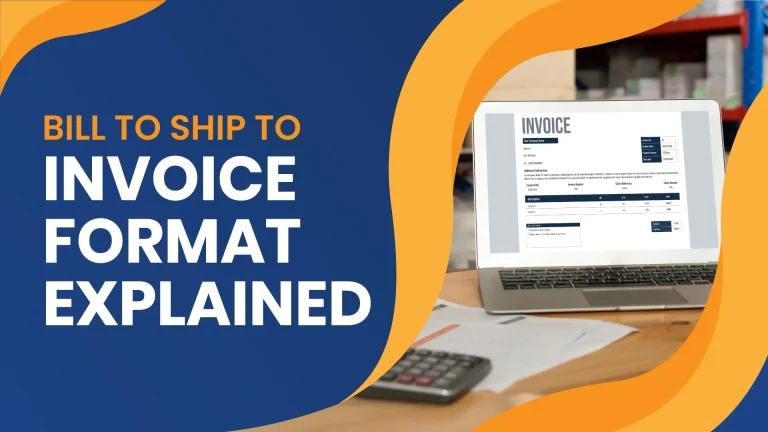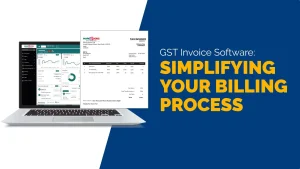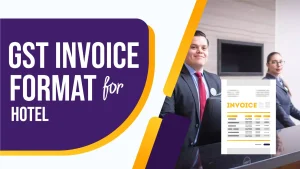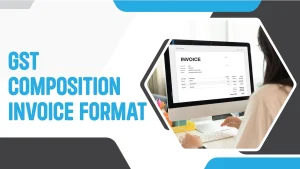Invoices are a crucial part of business operations. They help ensure that transactions are recorded accurately, payments are tracked, and both buyers and sellers have a clear understanding of the goods or services exchanged. One specific type of invoice format that businesses often use is the “Bill to Ship to” invoice format. This type of invoice is particularly useful in situations where the buyer and the recipient of the goods are not the same person or entity. This comprehensive guide will explain everything you need to know about the Bill to Ship to invoice format.
What is a Bill to Ship to Invoice Format?
The Bill to Ship to invoice format is a type of invoice that lists two different addresses: one for billing and one for shipping. This format is common in businesses where the person or company responsible for paying for the goods or services is different from the person or company receiving the goods or services. For example, a company may place an order for office supplies to be delivered to a specific branch while the billing is directed to the company’s headquarters.
Key Elements of a Bill to Ship to Invoice
To create an effective Bill to Ship to invoice, it is important to include several key elements. These elements ensure clarity and help avoid confusion between the parties involved. Here are the essential components:
- Invoice Number: A unique identifier for the invoice.
- Invoice Date: The date when the invoice is issued.
- Billing Address: The address where the bill is to be sent.
- Shipping Address: The address where the goods are to be delivered.
- Customer Information: Details of the buyer including name, contact information, and any customer identification numbers.
- Shipping Information: Details about the shipping method, expected delivery date, and any tracking numbers.
- Itemized List of Goods/Services: A detailed list of the products or services provided, including quantities, descriptions, unit prices, and total amounts.
- Total Amount Due: The total cost, including any taxes, shipping fees, and discounts.
- Payment Terms: Instructions on how and when payment should be made.
- Additional Notes: Any other relevant information, such as special instructions or comments.
Benefits of Using a Bill to Ship to Invoice Format
Using a Bill to Ship to invoice format provides several benefits for businesses, especially those with complex supply chains and multiple locations. Here are some advantages:
Improved Clarity and Organization
By separating billing and shipping addresses, businesses can ensure that the right documents go to the right places. This separation helps avoid confusion and ensures that the accounting department receives the invoice while the warehouse or specific branch receives the goods.
Enhanced Record-Keeping
A Bill to Ship to invoice format aids in keeping accurate records. By clearly distinguishing between the buyer and the recipient, businesses can better track orders, deliveries, and payments. This format is particularly useful for auditing purposes and financial reporting.
Streamlined Operations
For businesses with multiple locations or departments, the Bill to Ship to invoice format streamlines operations. Orders can be placed centrally, billed to a single location, and shipped to various destinations. This process simplifies inventory management and order fulfillment.
Better Customer Service
Providing clear and accurate invoices can enhance customer satisfaction. Customers appreciate receiving detailed invoices that clearly outline the transaction, including where the goods will be shipped and where the bill will be sent. This transparency can build trust and strengthen business relationships.
How to Create a Bill to Ship to Invoice
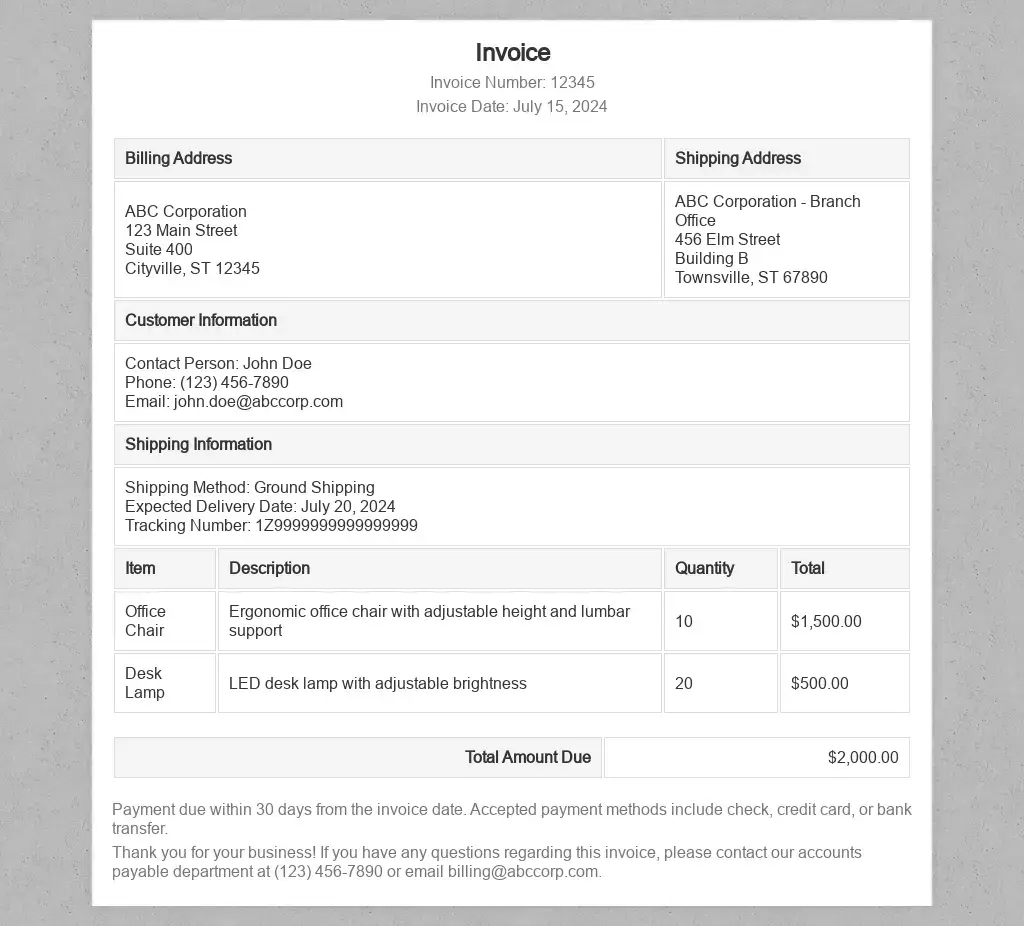
Creating a Bill to Ship to invoice involves several steps. Here is a detailed guide on how to create one effectively:
Step 1: Choose an Invoice Template
Start by selecting an invoice template that allows for both billing and shipping addresses. Many accounting software programs and invoicing tools offer customizable templates specifically designed for this purpose.
Step 2: Enter Invoice Details
Fill in the basic details of the invoice, including the invoice number, date, and any customer reference numbers. These details help in tracking and managing invoices.
Step 3: Add Billing and Shipping Addresses
Enter the billing address where the invoice should be sent. This address is typically the location of the buyer’s accounts payable department. Next, enter the shipping address where the goods should be delivered. Ensure both addresses are complete and accurate to avoid any delivery or billing issues.
Step 4: Include Customer Information
Provide detailed information about the customer, including their name, contact information, and any customer identification numbers. This information is crucial for record-keeping and communication purposes.
Step 5: List Goods or Services
Create an itemized list of the goods or services provided. Include a description, quantity, unit price, and total amount for each item. This list helps the customer understand what they are being billed for and facilitates accurate payment.
Step 6: Calculate the Total Amount Due
Add up the total cost of all items, including any applicable taxes, shipping fees, and discounts. Clearly display the total amount due at the bottom of the invoice.
Step 7: Specify Payment Terms
Outline the payment terms, including the due date, accepted payment methods, and any late payment penalties. Providing clear payment instructions helps ensure timely payment.
Step 8: Add Additional Notes
Include any additional notes or instructions that may be relevant to the transaction. This section can be used to provide special shipping instructions, comments, or thank-you messages.
Step 9: Review and Send the Invoice
Before sending the invoice, review all the details carefully to ensure accuracy. Once you are satisfied that everything is correct, send the invoice to the appropriate billing address.
Common Challenges and Solutions
While the Bill to Ship to invoice format is beneficial, it can present some challenges. Here are common issues businesses may encounter and solutions to address them:
Address Errors
Incorrect billing or shipping addresses can lead to delays and complications. Double-check all addresses before finalizing the invoice and consider using address verification tools to ensure accuracy.
Payment Delays
Payment delays can occur if the billing address is incorrect or if the invoice lacks clarity. Ensure that the billing address is accurate and provide clear payment instructions to avoid delays.
Communication Breakdowns
Miscommunication between the buyer, recipient, and accounts payable department can cause issues. Maintain open lines of communication and provide contact information on the invoice for any questions or clarifications.
Software Limitations
Not all invoicing software supports the Bill to Ship to format. Choose software that offers customizable templates or consider upgrading to a more robust invoicing solution if necessary.
Example of Bill to Ship to Invoice Format
Bill to Ship to Invoice
|
|||
|
|||
| Bill To | Ship To | ||
|
ABC Corporation 123 Main Street, Suite 400 Cityville, ST 12345 Contact: John Doe Phone: (123) 456-7890 Email: john.doe@abccorp.com |
ABC Corporation – Branch Office 456 Elm Street, Building B Townsville, ST 67890 Contact: Jane Smith Phone: (987) 654-3210 Email: jane.smith@abccorp.com |
||
| Payment Method | Check #12345 | ||
|
Ground Shipping Expected Delivery Date: July 20, 2024 Tracking Number: 1Z9999999999999999 |
|||
| Item | Price | ||
|
Office Chair Description: Ergonomic office chair with adjustable height and lumbar support Quantity: 10 |
$1,500.00 | ||
|
Desk Lamp Description: LED desk lamp with adjustable brightness Quantity: 20 |
$500.00 | ||
| Total: $2,000.00 | |||
| Payment due within 30 days from the invoice date. Accepted payment methods include check, credit card, or bank transfer. | |||
| Thank you for your business! If you have any questions regarding this invoice, please contact our accounts payable department at (123) 456-7890 or email billing@abccorp.com. | |||
Tips for Optimizing Bill to Ship to Invoices
To make the most of the Bill to Ship to invoice format, consider the following tips:
Use Professional Invoicing Software
Invest in professional invoicing software that offers customizable templates and advanced features. This software can help streamline the invoicing process and ensure accuracy.
Implement Standard Procedures
Develop standard procedures for creating and sending Bill to Ship to invoices. Train your staff on these procedures to maintain consistency and avoid errors.
Maintain Accurate Records
Keep detailed records of all invoices, including copies of Bill to Ship to invoices. This documentation is essential for tracking payments, resolving disputes, and preparing for audits.
Regularly Review and Update Templates
Regularly review and update your invoice templates to ensure they meet your business needs. As your business evolves, your invoicing requirements may change, so it’s important to keep your templates current.
Communicate Clearly with Customers
Ensure that your customers understand the Bill to Ship to invoice format and its benefits. Provide clear instructions on how to interpret the invoice and who to contact for questions or issues.
Conclusion
The Bill to Ship to invoice format is a valuable tool for businesses that need to separate billing and shipping addresses. This format enhances clarity, improves record-keeping, and streamlines operations. By following best practices and addressing common challenges, businesses can effectively utilize the Bill to Ship to invoice format to support their operations and improve customer satisfaction.
Also read
- How to Ensure Data Security in Your Invoice Management SystemIn today’s digital age, businesses rely heavily on technology to streamline operations and improve efficiency. An invoice management system plays a crucial role in managing financial transactions and maintaining accurate records. However, with the increasing reliance on technology comes the… Read more: How to Ensure Data Security in Your Invoice Management System
- GST Invoice Software: Making Billing EasyIn today’s busy world of business, being efficient is super important. One big thing that needs to be super efficient is billing. With new technology, old-fashioned manual billing is out of date and can make a lot of mistakes. That’s… Read more: GST Invoice Software: Making Billing Easy
- GST Invoice Format for HotelIn the hospitality industry, especially for hotels, managing financial transactions is a very important task. One key part of this financial management is creating invoices that follow the rules of the Goods and Services Tax (GST) in India. Having a… Read more: GST Invoice Format for Hotel
- GST Composition Invoice FormatThe GST (Goods and Services Tax) Composition Scheme is a straightforward and user-friendly taxation scheme designed for small businesses in India. This scheme reduces the compliance burden for small taxpayers by allowing them to pay GST at a fixed rate… Read more: GST Composition Invoice Format
- Everything You Should Know About Car Bill InvoiceWhen it comes to car purchases, sales, repairs, or rentals, a car bill invoice is an essential document. This invoice serves as a record of the transaction and provides a detailed account of the services rendered or goods sold. Understanding… Read more: Everything You Should Know About Car Bill Invoice
Frequently Asked Questions
What is a Bill to Ship to invoice format used for?
A Bill to Ship to invoice format is used when the billing address and shipping address are different. This situation often occurs in businesses where the buyer is different from the recipient of the goods or services. For example, a company may place an order for supplies to be delivered to a branch office while the invoice is sent to the headquarters for payment. This format ensures clarity in transactions and helps in proper record-keeping.
How does a Bill to Ship to invoice differ from a regular invoice?
A Bill to Ship to invoice includes separate fields for billing and shipping addresses, unlike a regular invoice that typically has only one address. This differentiation is important for transactions involving multiple locations or departments within a business. It ensures that the right department receives the goods while the accounting department handles the payment. This format helps in reducing confusion and improving the efficiency of order processing and payment handling.
What details are essential in a Bill to Ship to invoice?
A Bill to Ship to invoice should include several key details: invoice number, invoice date, billing address, shipping address, customer information, itemized list of goods or services, total amount due, payment terms, and any additional notes. These details ensure that all parties involved have a clear understanding of the transaction, including where the goods are to be shipped and where the bill should be sent. Accurate and complete information helps in smooth transaction processing.
Why is it important to double-check addresses on invoices?
Double-checking addresses on invoices is crucial to avoid delivery and billing errors. Incorrect addresses can lead to goods being shipped to the wrong location or invoices being sent to the wrong department, causing delays and confusion. Verifying addresses helps ensure that the right person or department receives the goods and the invoice, which in turn facilitates timely payment and efficient order fulfillment. Accurate addresses are essential for smooth business operations.
How can businesses benefit from using Bill to Ship to invoices?
Businesses benefit from using Bill to Ship to invoices through improved clarity, enhanced record-keeping, streamlined operations, and better customer service. This format ensures that invoices and shipments go to the correct addresses, reducing the risk of errors. It also aids in tracking orders, deliveries, and payments more effectively. By providing clear and accurate invoices, businesses can build trust with their customers and improve their overall operational efficiency.
What software can help create Bill to Ship to invoices?
Various accounting and invoicing software can help create Bill to Ship to invoices, such as MargBooks and Marg ERP. These tools offer customizable templates that include fields for both billing and shipping addresses. Using such software can streamline the invoicing process, ensuring accuracy and saving time. Additionally, these tools often provide features for tracking payments, managing customer information, and generating financial reports, further enhancing business efficiency.
What should be included in the itemized list of goods/services?
The itemized list of goods or services in a Bill to Ship to invoice should include descriptions, quantities, unit prices, and total amounts for each item. This detailed information helps the buyer understand what they are being billed for and ensures transparency. An accurate itemized list also aids in inventory management and financial tracking, making it easier for businesses to reconcile accounts and manage stock levels. Clear item descriptions and prices prevent misunderstandings and disputes.
How do payment terms affect the invoice process?
Payment terms on a Bill to Ship to invoice specify when and how the payment should be made, helping to ensure timely payments. These terms might include the due date, accepted payment methods, and any late payment penalties. Clear payment terms set expectations for the buyer and reduce the likelihood of payment delays. By outlining these terms, businesses can manage their cash flow better and avoid disputes over payment deadlines or methods.
How can businesses avoid common invoice errors?
To avoid common invoice errors, businesses should double-check all details before sending, including addresses, customer information, and itemized lists. Using professional invoicing software can also help by providing templates and automating calculations. Regularly reviewing and updating invoicing procedures and training staff on these procedures can further minimize mistakes. Clear communication with customers regarding invoice details and addressing any issues promptly also helps prevent errors and ensures smooth transactions.
What additional notes can be included in a Bill to Ship to invoice?
Additional notes in a Bill to Ship to invoice can include special shipping instructions, comments, or thank-you messages. These notes provide space for any extra information that might be relevant to the transaction. For example, you might include instructions for handling the shipment, reminders about payment deadlines, or contact information for customer support. Including additional notes helps to personalize the invoice and ensures that all necessary details are communicated effectively.

